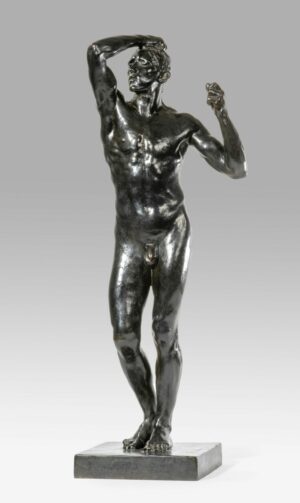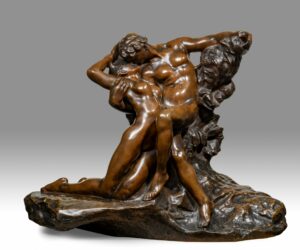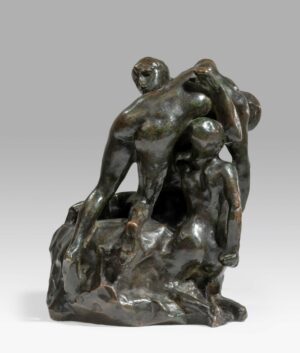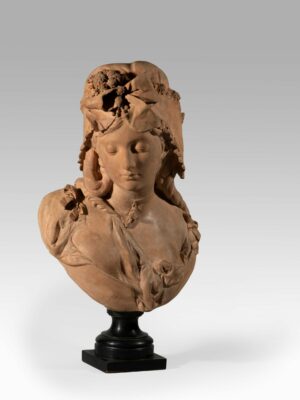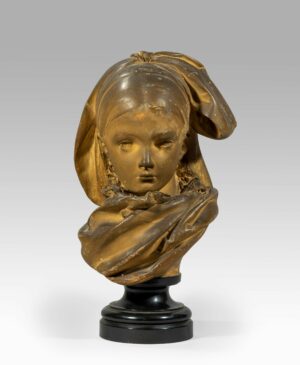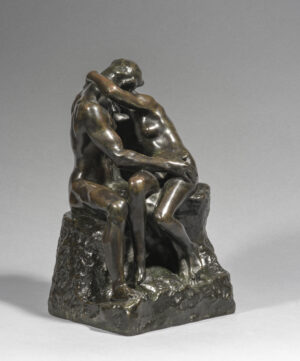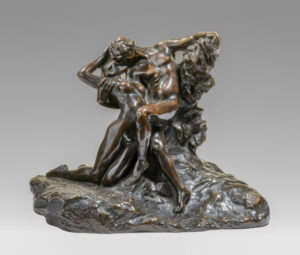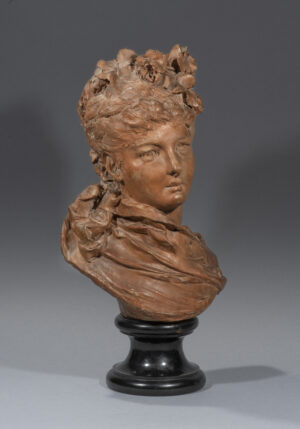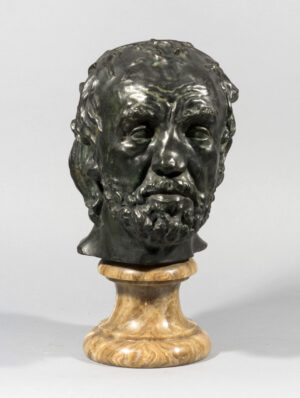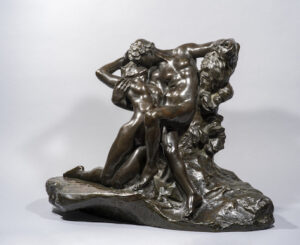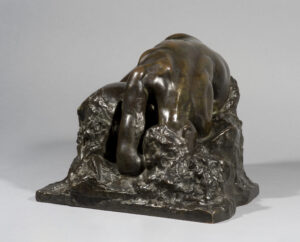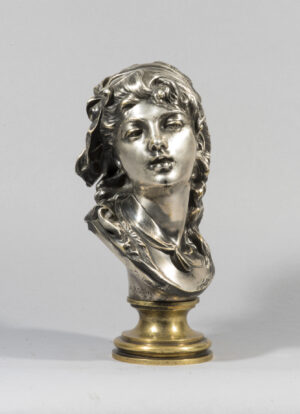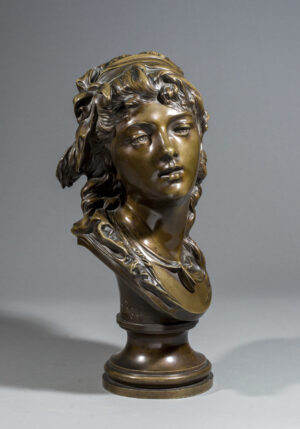Auguste RODIN
(1840-1917)
At a very young age, Auguste Rodin imposed his artistic vocation on his father and entered at the age of 14 the École Impériale Spéciale de Dessin et de Mathématiques, known as the “Petite École”. Rodin was first a craftsman before becoming an artist; rejected three times in a row at the École des Beaux-Arts in Paris, he became a mason and worked as a statuary, roughing out marble and stones, and making jewellery ornaments for a goldsmith. In 1864, he met Rose Beuret who gave him a son, Auguste, and shared his life until her death. After the 1870 war, he left for Belgium to work for Albert-Ernest Carrier-Belleuse (1824-1887), and contributed to the decoration of buildings in Brussels such as the Palais des Académies. His discovery of Michelangelo’s tombs in the sacristy of San Lorenzo in Florence in 1876 had a definitive influence on his work. L’âge d’Airain (1877) bears witness to this, despite the controversy that arose when it was presented in Brussels and at the Salon des Artistes Français in Paris: the accusation that he had cast a live model, which was later refuted, drew attention to the exceptional quality of the model. The 1880s marked the beginning of a prolific production in which the sculptor glorified voluptuousness, sensuality, strength, pain and passion. Among these, The Gate of Hell (1880-1900), The Kiss (around 1882), the monuments dedicated to the Burghers of Calais (1889), to Victor Hugo (1889-1897,1901), and to Balzac (1898). During these years, the artist met Camille Claudel (1864-1943), who was in turn his pupil, his model, his mistress and his muse. Their final break-up took place around 1893. From 1890 onwards, he enjoyed international success. At that time, he was running three workshops. After collecting quite a few romantic conquests, Rodin was later under the thumb and influence of the Duchess of Choiseul and he travelled around the world with his exhibitions: Cologne, Dresden, Prague, London…. He became friends with many of the world’s leading artists: painters (Monet, Whistler, Legros), dancers (Isadora Duncan, Loïe Fuller, Hanako, Nijinsky), writers (Rilke, Zola), and sculptors who, for some of them, had once been his students (Boucher, Desbois, Bourdelle, Pompon). At the age of 60 (in 1900), Rodin organised a retrospective exhibition of his work at the Pavillon de l’Alma, on the fringes of the Exposition Universelle. The sculptor thus wanted to display his work in its broad scope. At the age of 76, he became seriously ill. He then made three donations of his collections to the French state with the aim of setting up a Rodin Museum.
Rodin gave a new impetus to sculpture, which he regarded as frozen in academicism, by delivering a synthesis of its fundamentals: Greek art, Romanesque art, architecture of cathedrals, nature, Donatello and Michelangelo – the art of modelling, the play of light and shade, the real truth of the figures, far from any idealisation, the exaltation of bodies and flesh, the metaphysical torment. Considered one of the fathers of modern sculpture, he produced around 7,000 sculptures, 10,000 drawings and 10,000 photographs.

